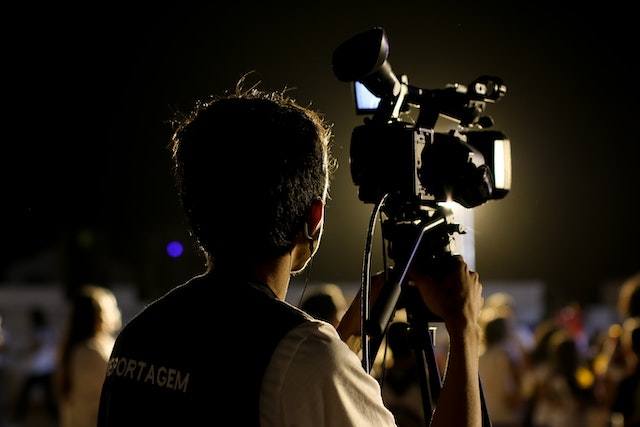“Infotainment” is an English neologism that has institutionalized the sensationalization of drama along with invasive and disrespectful journalism, leading to a decline in the quality of information content. It’s the reality of pain, torment transformed into entertainment stories for an audience always attracted to sensational news, other people’s tragedies, and, I emphasize, the tragedies of others. The influential French philosopher Bourdieu once remarked that “Blood, sex, melodrama, and crime have always been big sellers.”
The motto “bad news are good news” is famous, meaning that bad news, the ones that get the most viewership, are considered good news.
Today, it’s no longer about selling the news but rather a simplifying narrative that can be understood by the masses, those without education or simply without the desire to delve deeper. This reflects the practice of “dumbing down,” cultural flattening, which is now present in every sector, from Literature and Cinema to Culture, etc., and prominently in Communication, especially visual communication, where this flattening unites and prevails. Fixed shots on the tears and pain of unknown people, because what needs to be sold is no longer the event itself but its construction (newsmaking), a narrative supported by vibrant live television and web broadcasts, and repeated journalistic articles with impactful headlines and images to confer credibility. It’s about saying, “I saw it on television” (not “I heard it“), confirming the power of visual communication of the narrated news that engages the viewer in the so-called “shared immediate experience” as cited by the Israeli sociologist Elihu Katz.
All of this is still surrounded by another hybrid, “emotainment,” which is characterized by strong emotional content emphasized by daytime television and evening talk shows with characters in search of an audience, during which events are turned into narratives without happy endings.
Unfortunately, market logic has mostly erased the historic mission of journalism as a guardian of democracy, often called “the watchdog of democracy.”
There’s no time to dwell on the human aspects of a story or how spoken and written words might affect the genuineness of the event. Everything moves quickly, including pain. But what appears more serious is that there’s no more time for compassion, if there ever was. It would only be a burden that would slow down advertising revenue. Instead, the mantra is “Tell all, show all.” The Truman Show is on the air! And the news is no longer the star of the show; instead, it becomes the one who broadcasts that news.
Sensationalistic journalism in Italy likely came to light in 1961, on Mont Blanc, with three climbers stranded on the glaciers. The country’s television coverage, which had only recently emerged, brought other people’s pain into Italian homes for the first time, with personal details of the unfortunate and even the rescue operations, to the extent that one of the survivors, Walter Bonatti, accused Emilio Fede of hindering them. “I can assure you that the moral violence that the ‘civilized man’ can inflict is by no means inferior to any physical violence. I have experienced and paid for this to the fullest,” Bonatti wrote.
But the human tragedy that remains in collective memory and most changed the way information is reported (long before information professionals became entertainers and set the trend) occurred in June 1981, the same year as the assassination attempt on Pope John Paul II. A six-year-old boy fell into a well in Vermicino, and his slow agony became an exceptional media event. It was a tragedy that passed through journalistic reporting and turned into fiction. A flood of words, unified networks, 18 hours of live television, 32 million viewers glued to the screen day and night, 32 million Italians in a black hole with little Alfredino Rampi. 60 hours of a reality show with the constant background noise of drills digging and the voices of rescuers on walkie-talkies, interrupted by advertisements, TV quizzes, and children’s programs!
At the scene of the tragedy, the then-President of the Republic, Sandro Pertini, was also present, while the surrounding countryside turned into an unusual gathering with beverage and sandwich vendors and an immense crowd that didn’t even let the ambulance through. It was the first attempt at infotainment that exploited people’s curiosity and susceptibility.
Someone once said that pain can only be exorcised when shared, and indeed, that universal pain united Italy from north to south, but sharing it inevitably transformed us (and still transforms us) into detectives and judges. There were insinuations about Alfredino’s father and even about the mother’s ‘coldness.’ There are always baseless insinuations and irrelevant judgments in tragedies we don’t experience personally. Sharing it also turns us into morbid tourists each time. Places like Cogne, Avetrana, Erba, Garlasco, or the rock where the Concordia cruise ship ran aground become places to visit. This is because the sensationalism with which a dramatic event is told distorts it, extracts it from its real tragedy, reduces it to mere fiction, and profits from the desperation of families, especially with the support of current information technologies. It’s often forgotten that social media are voids where words sink only to resurface as bytes at the least appropriate times, perhaps in front of a grieving father.
The German philosopher and writer Walter Benjamin said, “The art of storytelling is an ancient, artisanal, ethical, and communal activity; the one who tells a story is a wise person who aims not to entertain but to teach, and precisely for this reason, has a social role.” A social role that journalism has inevitably lost.
Federico Di Mattia
Cover Ph by Nino Souza
